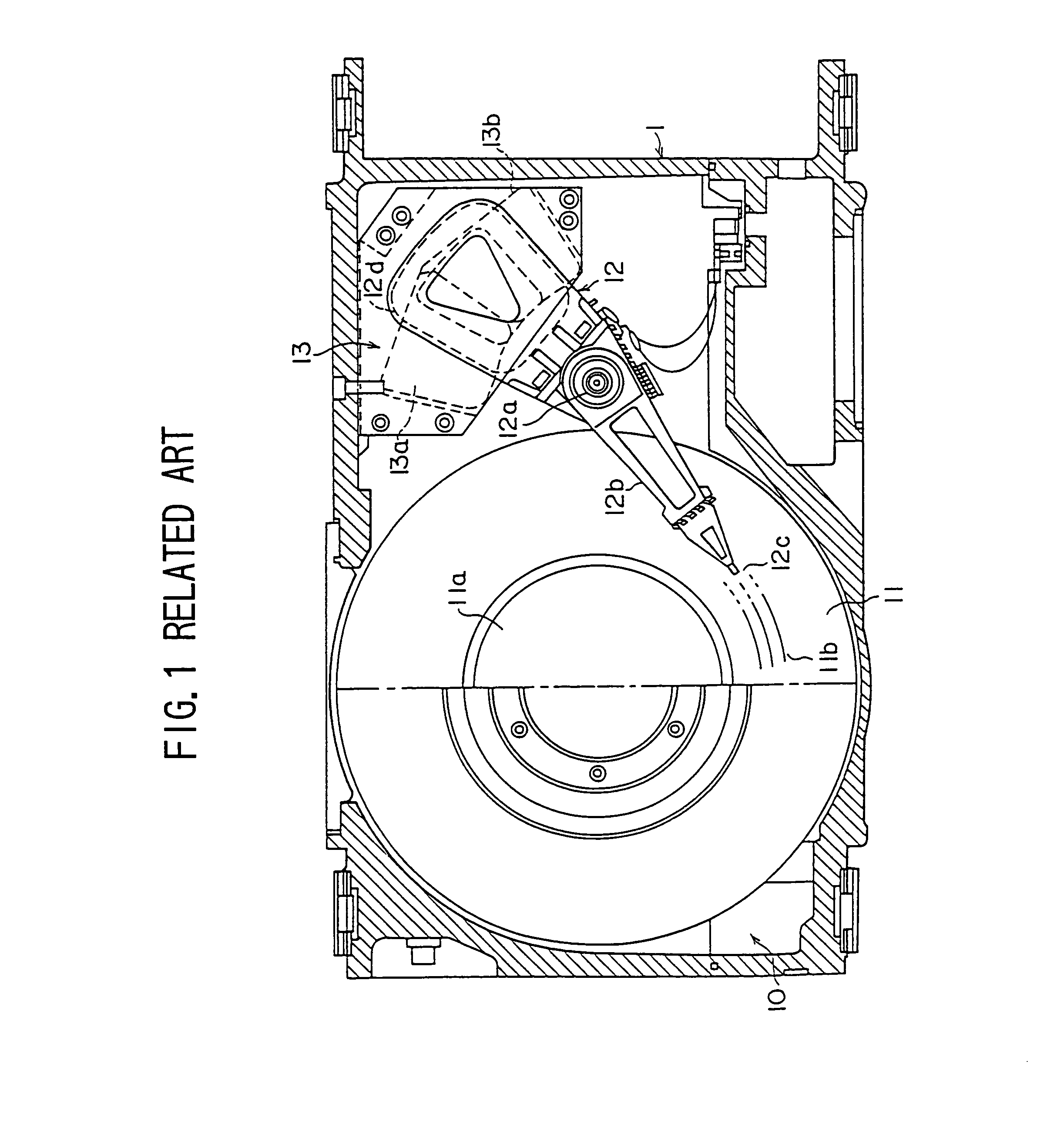Magnetic disk drive having a surface coating on a magnetic disk
a magnetic disk and surface coating technology, applied in the field of magnetic disk recording information, can solve the problems of increasing the rotational speed of the magnetic disk, reducing the proportion of the lubricating film bonded layer, and the process has not been effective for reducing the mobile component, so as to improve the bonding rate and the effect of strong adhesion to the underlying disk surface and high bonding ra
- Summary
- Abstract
- Description
- Claims
- Application Information
AI Technical Summary
Benefits of technology
Problems solved by technology
Method used
Image
Examples
first embodiment
[0113]FIG. 5 shows the construction of a d.c. magnetron sputtering apparatus 30 used for forming a DLC film in a first embodiment of the present invention, wherein those parts corresponding to the parts described previously are designated by the same reference numerals.
[0114]Referring to FIG. 5, the sputtering apparatus 30 has a construction similar to the sputtering apparatus 20 of FIG. 4 except that the sputtering apparatus 30 includes additional mass-flow controller 24C and a line 24D for supplying oxygen into the processing chamber 21.
[0115]Thus, by using the sputtering apparatus 30 of FIG. 5, it becomes possible to carry out a sputtering process in a plasma atmosphere containing oxygen radical, wherein the oxygen radical thus formed in the processing chamber 21 immediately reacts with and removes any DLC film or DLC particles that are formed on the surface of the graphite target 23A or 23B in correspondence to the central region thereof where the plasma density is low.
[0116]Thu...
experiment 2
[0125]FIG. 7B shows the observed arc events per minute for the experiment in which the deposition of the DLC film 31E is conducted on the substrate 22 under a condition similar to the case of the experiment of FIG. 7A, except that an oxygen gas is supplied to the processing chamber 21 from the line 24D with a flow-rate of 1 SCCM in addition to the mixed gas of Ar / CH4 supplied with a flow-rate of 99 SCCM from the line 24B. Thus, in the experiment of FIG. 7B, the sputtering atmosphere contains 1% of oxygen in terms of flow-rate, and a deposition rate of 1.96 nm / second was obtained for the DLC film 31E on the substrate 22.
[0126]Referring to FIG. 7B, it can be seen that occurrence of the arc event is successfully and effectively suppressed as a result of addition of oxygen to the sputtering atmosphere. While a few arc events are recognized after ten hours from the start of the deposition, no appreciable increase of the arc events is observed until 25 hours from the start of the depositi...
experiment 3
[0129]FIG. 7C shows the observed arc events per minute for the experiment in which the deposition of the DLC film 31E is conducted on the substrate 22 under a condition similar to the case of the experiment of FIG. 7A or FIG. 7B, except that an oxygen gas is supplied to the processing chamber 21 from the line 24D with a flow-rate of 10 SCCM in addition to the mixed gas of Ar / CH4 supplied with a flow-rate of 90 SCCM from the line 24B. Thus, in the experiment of FIG. 7C, the sputtering atmosphere contains 10% of oxygen in terms of flow-rate, and a deposition rate of 1.76 nm / second was obtained for the DLC film 31E on the substrate 22.
[0130]Referring to FIG. 7C, it can be seen that occurrence of the arc event is successfully and effectively suppressed as a result of addition of oxygen to the sputtering atmosphere. While a few arc events are recognized after 36 hours from the start of the deposition, no arc event was observed at all until 30 hours from the start of the deposition.
[0131]...
PUM
| Property | Measurement | Unit |
|---|---|---|
| half-height width | aaaaa | aaaaa |
| half-height width | aaaaa | aaaaa |
| separation distance | aaaaa | aaaaa |
Abstract
Description
Claims
Application Information
 Login to View More
Login to View More - R&D
- Intellectual Property
- Life Sciences
- Materials
- Tech Scout
- Unparalleled Data Quality
- Higher Quality Content
- 60% Fewer Hallucinations
Browse by: Latest US Patents, China's latest patents, Technical Efficacy Thesaurus, Application Domain, Technology Topic, Popular Technical Reports.
© 2025 PatSnap. All rights reserved.Legal|Privacy policy|Modern Slavery Act Transparency Statement|Sitemap|About US| Contact US: help@patsnap.com



